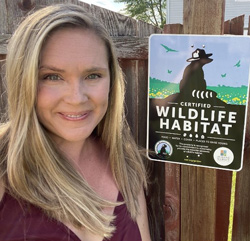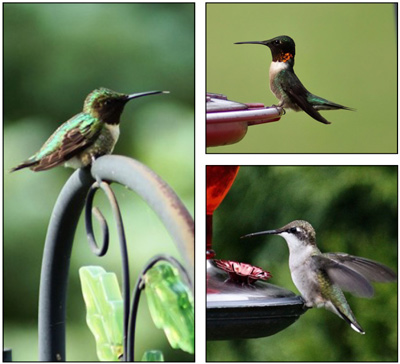By MEGAN RATHZ
When Nature Speaks
 It is a joyful thrill for me to see a hummingbird. There is something charming about a visit from one of these gentle, delicate, vivid, shy, dainty and miniature birds. Their beautiful swiftness is captivating how they flutter from one flower to the next, drinking sweet nectar before vanishing to their next destination.
It is a joyful thrill for me to see a hummingbird. There is something charming about a visit from one of these gentle, delicate, vivid, shy, dainty and miniature birds. Their beautiful swiftness is captivating how they flutter from one flower to the next, drinking sweet nectar before vanishing to their next destination.
There is an old expression that says, “Time passes as fast as a hummingbird flutters.”
My children are one and three years old right now. Everything is so exciting to them. Little things that most adults do not even notice are new experiences for them, and I treasure this so much.
I was outside with my three-year-old and we were looking at our flowers. In my head, I was surveying the damage the bunnies had done to my plants and assessing if I needed to water when she said, “Mommy! I hear the birds singing. So many birds are singing!” She was so excited to proclaim this to me.
I know I will blink and they will both be graduating high school, ready to embark on their next adventure that life has for them; I am sure it will feel like time will have passed as fleeting as a hummingbird landing on my flower.

Photos provided by Al Hopkins
Hummingbirds are more than beautiful fixtures in a garden. They are vital pollinators and essential to our wildlife habitats. They are often referred to as “feathered bees” in a garden because of their ability to pollinate flowers at a staggering rate. The hummingbird drinks nectar while pollinating a plant in a beautiful coexisting relationship between these intriguing birds and our treasured flowers. Many of the same flowers that attract butterflies will also draw hummingbirds.
The more appealing you can make your garden to these darting creatures, the more pleasure they will offer. Providing a hummingbird feeder is a wonderful addition to any garden. According to audubon.org, one can very easily make hummingbird mixture at home by mixing four parts water to one part refined white sugar, bringing to a boil and letting cool before filling your feeder at home. “Do not substitute honey, which can promote dangerous fungal growth, or use red food coloring, which is not necessary and could also prove harmful to birds.”
I have never once bought commercial hummingbird nectar, and trust me – hummingbirds will flock to your feeder with this homemade recipe. It is very important to change the nectar in your feeder frequently, especially in the summer!
Hummingbirds are very small in stature and have nests that match their petite size. Their nests are no larger than a ping-pong ball. Hummingbirds are predominantly migratory birds. According to britannica.com, “The architecture of the wing permits hummingbirds to fly not only forward but also straight up and down, sideways, and backward and to hover in front of flowers as they obtain nectar and insects from them.” Their rapid speed of pollination makes them a wonderful visitor to frequent your flowers. Hummingbirds are drawn to brightly colored flowers. They like things shaped as a bell that allow their long beaks to drink nectar. If the flower provides a place for them to perch while they drink, they will like it even more!
Some flowers that I happen to love that will attract hummingbirds include Trumpet Vine, Coral Bells, Salvia, Bee Balm (you cannot have enough of this in your garden, trust me!), Fuchsia, Petunias and if you’re looking for a wonderful native plant to add that will attract them, check out Cardinal Flower! Unlike butterflies and bees that are attracted to sun-loving plants and rely on them for nectar, hummingbirds are attracted to both shade-loving and sun-loving plants, which is great for pollination if you have a primarily shaded garden.
“I always loved those little creatures, always feeling blessed when they appeared nearby. There’s a magical quality to them.” The words of Leonard Cohen so beautifully capture exactly how I feel when I look up and see one of these tiny winged beauties.
Children have a way of naturally noticing things and reminding us to stop and notice them, too. I am grateful for the reminder to stop and listen for the birds singing. That same childlike excitement that my daughter felt when she heard the birds singing is still how I feel whenever I see one of those magical little birds.
Nature is talking to us, and the birds are singing. Do you hear it?
